Disclosure: This article contains affiliate links. We may earn a commission from purchases at no extra cost to you, which helps our travel content.
Y'all ever stood in a place where you can practically feel the ghosts of history brushing past you? That's Lowell, Massachusetts for ya—a city that practically wrote the playbook for America's Industrial Revolution before most folks even knew what that meant. Last fall, I found myself drawn to these red-brick behemoths along the Merrimack River, not just as an artist obsessed with archival spaces, but as someone who sees the poetry in how places reinvent themselves. Lowell's done just that, transforming from textile manufacturing powerhouse to a vibrant cultural district that honors its past while creating something entirely new.
Lowell National Historical Park: Where America's Industrial Story Lives
The heart of Lowell's historical identity beats strongest at the Lowell National Historical Park, which ain't your typical ropes-and-placards kind of museum setup. It's a sprawling complex of restored mill buildings, working canals, and machinery that'll transport you straight back to the 1820s faster than any time machine could.
I spent my first morning with a park ranger who knew more Lowell mill trivia than should be legally allowed in one brain. The Boott Cotton Mills Museum hit me like a freight train—walking into that weave room with 88 power looms running simultaneously is a full-body experience. The thunderous noise, the vibration in your chest, the cotton particles dancing in sunbeams—suddenly you get what it meant to be one of those mill girls working 14-hour days.
For serious history buffs, I recommend grabbing the audio tour headset from the visitor center. The standard tour's great, but having those noise-cancelling headphones lets you toggle between hearing the authentic roar of the machines and the detailed narration without missing either.
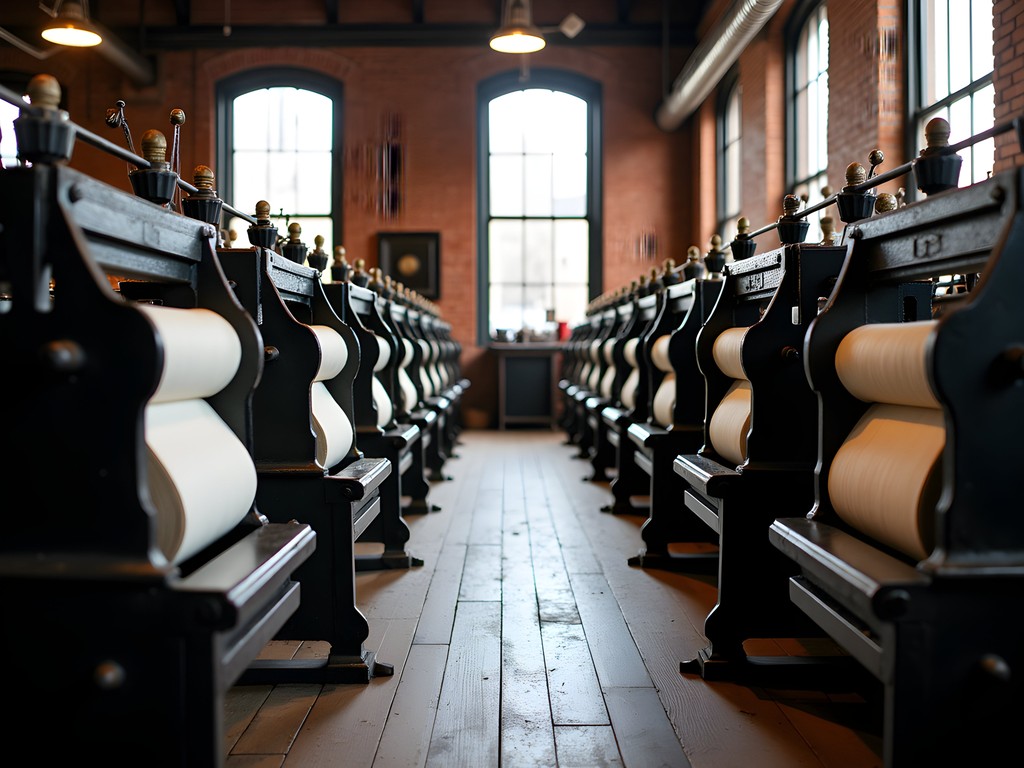
💡 Pro Tips
- Visit early on weekdays to avoid school groups
- The canal boat tours only run May-October, so check schedules
- Pick up the free Junior Ranger booklet even if you're an adult—it's got the best maps of the canal system
Canal Culture: Waterways That Built America
Lowell's 5.6-mile canal system is like the city's circulatory system—these waterways powered the mills that changed American manufacturing forever. What fascinates me as someone who documents collections is how these canals represent both engineering achievement and environmental manipulation on a scale that was revolutionary for its time.
I spent an entire afternoon just walking the canal pathways, sketchbook in hand, tracing how water shaped this city's destiny. The Francis Gate, this massive engineering marvel designed to control flooding, is particularly worth seeking out—it's like finding industrial-era sculpture hiding in plain sight.
For the full experience, hop on one of the seasonal canal boat tours. The guides are wicked knowledgeable (yes, I'm picking up that New England slang) and you'll see the city from an angle most visitors miss. I brought my waterproof notebook which was clutch when we got splashed going through the locks. The pages stayed perfectly dry while I sketched the mechanical systems and jotted notes about the hydraulic engineering.
During fall, the contrast between the red brick mills, blue water, and golden foliage creates a color palette that had me filling pages of my sketchbook.
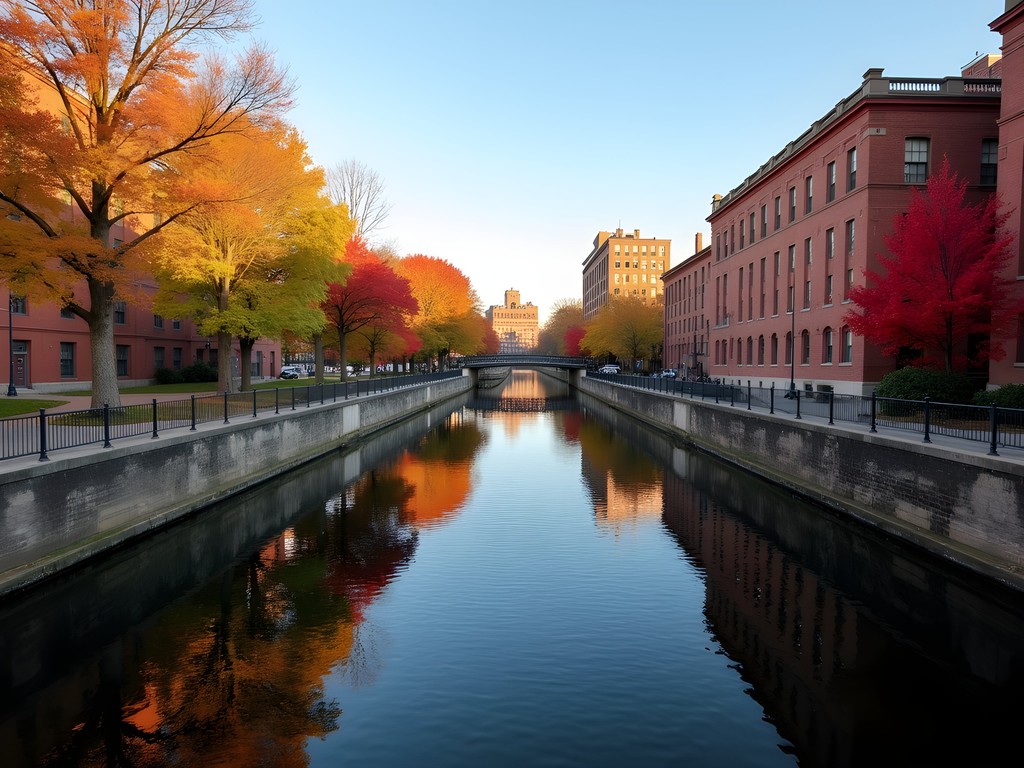
💡 Pro Tips
- Walk the Canalway path at sunset for the best lighting on the brick buildings
- Bring water and snacks—the full canal loop is longer than it appears on maps
- Look for the working locks demonstration schedule at the visitor center
Mill No. 5: Industrial Space Meets Creative Marketplace
Now y'all know I can't visit a city without hunting down its most interesting market spaces. Mill No. 5 is exactly the kind of spot that makes my heart sing—a fourth-floor walkup in a repurposed textile mill that's been transformed into an indoor streetscape of independent shops, a vintage theater, and event spaces.
What makes Mill No. 5 special is how it honors the building's industrial bones while creating something entirely contemporary. Original wooden floors creak underfoot as you browse indie bookstores, vinyl record shops, and artisanal food vendors. The Sunday farmer's market had me loading up on local cheeses and handmade chocolates faster than I could say "budget trip."
I spent hours in the independent bookstore, picking up a local history book that provided context I couldn't find in standard guidebooks. The shop owner pointed me toward chapters about the immigrant communities that powered these mills—stories that complicated and enriched my understanding of the city.
Don't miss Luna Theater, this perfect little 49-seat cinema showing indie films and classics. I caught a documentary about textile manufacturing that connected perfectly with what I'd been seeing around town. The theater serves local craft beers, and I may have indulged in a gourmet popcorn seasoning that I now carry in my travel kit for impromptu movie nights on the road.

💡 Pro Tips
- Check their events calendar—weekends often feature live music or special markets
- The coffee shop inside makes the best lavender latte in New England
- Many shops are cash-only, so hit the ATM beforehand
The Boott Cotton Mills Museum: Where Machines Tell Human Stories
As someone who's documented scientific specimens professionally, I'm drawn to collections that tell stories through objects—and the Boott Cotton Mills Museum does this brilliantly. Beyond the thunderous weave room I mentioned earlier, the museum houses collections that document the human side of industrialization.
The most affecting exhibit for me was the recreation of boarding house quarters where young mill workers—mostly women—lived under strict company rules. These tiny shared rooms with their sparse furnishings speak volumes about labor conditions and women's limited economic options in the 19th century.
I found myself completely absorbed in the personal artifacts—handwritten letters from mill girls to their families back on farms, simple personal items they brought to make their boarding houses feel more like home. I always carry my pocket magnifier to examine details in museum exhibits, and it came in handy for reading the faded handwriting in these intimate documents.
The museum's research library is an absolute treasure for history nerds. I made arrangements in advance to access their archives of textile patterns and manufacturing documentation. The librarian even pulled some original daguerreotype photographs of mill workers that weren't on display—the kind of behind-the-scenes access that makes my documentation-loving heart skip a beat.

💡 Pro Tips
- The museum is quieter in late afternoons when school groups have departed
- Ask about special access to the research library if you have specific interests
- Don't rush through the personal artifacts section—it's where the human stories really shine
Rooftop Views and Hidden Gems
Y'all know I can't visit a city without seeking out its rooftops, and Lowell delivered in unexpected ways. While not known for skyscrapers, the city offers several elevated perspectives that completely transform your understanding of its layout and history.
The UMass Lowell Inn & Conference Center (formerly the Doubletree) has a rooftop deck that's technically for guests, but if you ask nicely at reception and explain you're documenting the historical landscape, they might grant you access. From up there, the relationship between the canals, mills, and modern city becomes clear—you can trace the water's path and understand how the natural landscape was engineered to power an industrial revolution.
For sunset views, I recommend hiking up to the top of Fort Hill Park. I packed a simple picnic blanket that folds into a tiny pouch but provides enough space to spread out with some local cheese and bread from the farmer's market. The fort itself is long gone, but the elevated position offers panoramic views of the Merrimack River and mill district bathed in golden hour light.
For a truly hidden gem, seek out the Western Canal Walkway behind the mills—it's less trafficked than the main canal paths but offers intimate views of the waterworks and architecture without the crowds. I stumbled upon a local artist painting there one evening, and we ended up chatting for an hour about how the changing light transforms the brick facades throughout the day.

💡 Pro Tips
- Fort Hill Park is best at sunset but bring a flashlight for the walk down
- The Western Canal path can be muddy after rain—wear appropriate shoes
- Look for the 'ghost signs'—faded advertisements painted on brick buildings throughout the district
Final Thoughts
Lowell ain't just some faded industrial town clinging to better days—it's a living laboratory where America's manufacturing past is being preserved while its spaces find new purpose. As someone who's spent years documenting collections and archives, what strikes me most about Lowell is how thoroughly it embraces the layers of its history rather than papering over them.
The city reminds me that our industrial heritage isn't separate from our cultural present—they're threads in the same fabric, just like the cotton once woven in these mills. There's something powerfully authentic about a place that honors its working-class roots while reinventing itself through arts, education, and preservation.
Next time you're mapping out a New England trip, don't just breeze through Lowell on your way somewhere else. Give it a weekend. Walk the canals. Feel the vibration of those power looms. Let the city's rhythms—both historical and contemporary—work their way into your bones. You'll leave with a deeper understanding of how America's industrial past shaped our present, and how thoughtful preservation can transform spaces without erasing their stories. As we say down south, these old mills still have plenty of stories to tell—if you take the time to listen.
✨ Key Takeaways
- Lowell offers an immersive experience of America's Industrial Revolution that goes beyond traditional museums
- The canal system provides both historical context and beautiful walking paths throughout the city
- Repurposed mill spaces like Mill No. 5 showcase how industrial architecture can be reimagined for modern cultural uses
- Fall offers the perfect balance of good weather and stunning foliage as backdrop to the brick architecture
- Budget travelers can experience the city's rich history without breaking the bank
📋 Practical Information
Best Time to Visit
September-October for fall foliage and comfortable temperatures
Budget Estimate
$150-250 for a weekend (excluding accommodations)
Recommended Duration
2-3 days
Difficulty Level
Easy


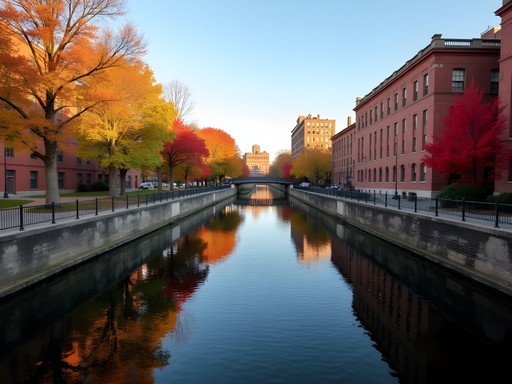
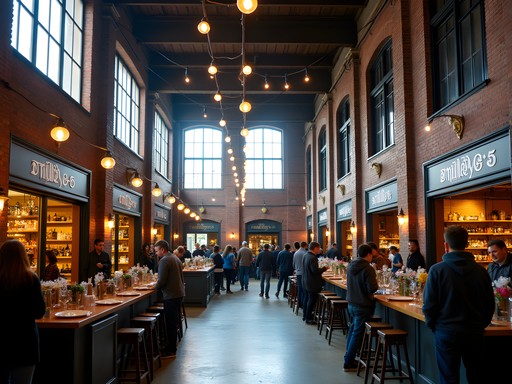
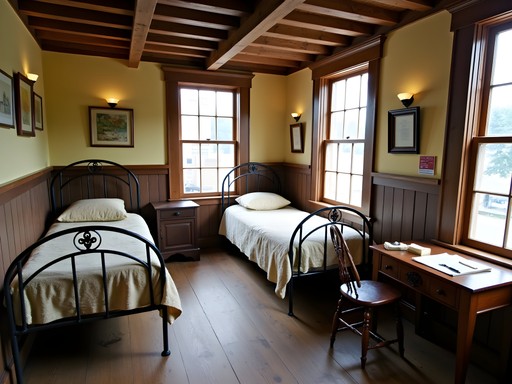
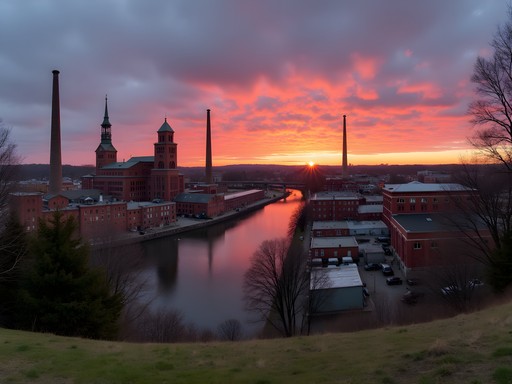










Comments
globediver
Love how they've transformed these old buildings into something new! Great photos!
Sophia Gomez
I was in Lowell for a business conference last month and extended my stay to explore the mills. What a revelation! The way they've preserved the industrial architecture while breathing new life into these spaces is masterful. I took a self-guided tour using audio guide which was incredibly informative. The juxtaposition of massive machinery against the human stories of mill workers (especially women and immigrants) was powerful. If you're into photography like me, go early morning when the light streams through those massive windows and illuminates the restored machinery. Pure magic for industrial heritage enthusiasts!
explorenomad
Any good restaurants in the mill district you'd recommend?
vacationexplorer
Is public transportation good enough to get around or should I rent a car?
Fatima Sims
I found the trolley system super convenient for getting around the historic district! If you're just exploring downtown Lowell, you definitely don't need a car.
luckyadventurer
OMG I LOVE Mill No. 5!! Those vintage shops are amazing and I found the coolest handmade jewelry there last month! The coffee shop inside makes the best chai latte I've ever had!!
globediver
The indie movie theater there is awesome too!
Fatima Sims
I visited Lowell last September and was blown away! The canal tour was my absolute favorite - something magical about gliding through the same waterways that powered America's industrial revolution. Our guide was a former mill worker's grandson who shared personal family stories that you won't find in any guidebook. Pro tip: wear comfortable shoes because you'll want to explore every inch of the mill district on foot. And don't miss the sunset view from the Merrimack River boardwalk - absolutely stunning against the brick mill buildings!
vacationmate
Great post! How much time would you recommend spending at the Boott Cotton Mills Museum? Is it kid-friendly?
Corey Kelly
Thanks for asking! I'd say 2-3 hours is good for the museum. It's definitely kid-friendly - they have interactive exhibits where kids can see how the looms work, and the sound demonstrations really capture their attention!
vacationmate
Perfect, thanks! Will add it to our itinerary for the fall break trip.
happylover
Just visited based on your recommendation! Mill No. 5 was such a cool spot for lunch and shopping. Thanks!
mountainlover
I grew up an hour from Lowell but never appreciated what was in my backyard until I moved away! Went back to visit family last year and finally did the full historical park experience. Those working looms at Boott Mills are INTENSE - you really get why labor movements started in places like this. The canal boat tour was surprisingly fascinating too. Makes me proud of my Massachusetts roots seeing how they've preserved this important piece of American history.
roamvibes
This post has me HYPED to visit Lowell!! Anyone know if it's doable as a day trip from Boston? Or should I plan to stay overnight? Also dying to check out that Mill No. 5 marketplace - looks like such a vibe from your pics, Corey!
wildperson
Totally doable as a day trip! It's like 40 mins by train from Boston. We did that and had plenty of time to see everything.
Hunter Thompson
Day trip works but I'd recommend staying overnight if you can! There's a cool little boutique hotel in one of the converted mills that gives you the full experience. Plus the local brewery is worth checking out in the evening!
Venture X
Premium card with 2X miles, $300 travel credit, Priority Pass